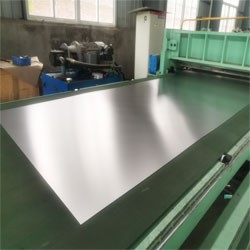Corrosion resistance and reliability evaluation of nickel pipe fittings
—— Corrosion resistance and reliability evaluation of nickel pipe fittings
[ 信息发布:本站 | 时间:2024-03-11 | 浏览:478 ]
Corrosion resistance and reliability evaluation of nickel pipe fittings
The corrosion resistance and reliability of nickel pipe fittings are essential factors in ensuring the integrity and longevity of piping systems, particularly in industries where exposure to corrosive environments is prevalent. Here's how corrosion resistance and reliability are evaluated for nickel pipe fittings:
00001.
Material Selection:
00002.
Nickel alloys are chosen for pipe fittings due to their inherent corrosion resistance in various environments, including acidic, alkaline, and saline conditions.
The selection of specific nickel alloys depends on the application requirements, such as temperature, pressure, and chemical composition of the fluid being transported.
00003.
Laboratory Testing:
00004.
Corrosion resistance of nickel pipe fittings can be evaluated through standardized laboratory tests such as salt spray testing, immersion testing, and electrochemical testing.
These tests simulate the exposure of the fittings to corrosive environments and measure factors such as corrosion rate, pitting resistance, and passivation behavior.
00005.
Field Performance:
00006.
Nickel pipe fittings undergo field evaluations in real-world operating conditions to assess their long-term corrosion resistance and performance.
Monitoring corrosion rates, inspecting surface conditions, and conducting periodic maintenance help evaluate the fittings' resistance to corrosion over time.
00001.
Material Properties:
00002.
Nickel pipe fittings are evaluated based on their mechanical properties, including tensile strength, yield strength, hardness, and ductility.
The consistency and reliability of material properties ensure the fittings can withstand operating conditions without failure.
00003.
Manufacturing Quality:
00004.
Quality control measures during manufacturing, such as dimensional inspection, surface finish assessment, and non-destructive testing (NDT), ensure the reliability of nickel pipe fittings.
Defects such as cracks, porosity, and inclusions are identified and addressed to prevent premature failure.
00005.
Installation Integrity:
00006.
Proper installation techniques, including surface preparation, alignment, welding procedures, and tightening torque for threaded connections, ensure the integrity and reliability of nickel pipe fittings.
Improper installation can lead to leaks, joint failures, and accelerated corrosion, compromising the reliability of the piping system.
00007.
Service Life Prediction:
00008.
Service life prediction models and corrosion rate calculations based on environmental factors, material properties, and operating conditions help assess the long-term reliability of nickel pipe fittings.
Factors such as temperature fluctuations, flow rates, chemical concentrations, and exposure to abrasives or erosion are considered in predicting the fittings' service life.
00001.
Standards Compliance:
00002.
Nickel pipe fittings are manufactured and tested according to industry standards and specifications such as ASTM, ASME, DIN, and API.
Compliance with these standards ensures that the fittings meet minimum requirements for material properties, dimensional accuracy, and performance.
00003.
Quality Management Systems:
00004.
Manufacturers of nickel pipe fittings implement quality management systems (QMS) such as ISO 9001 to ensure consistent quality, traceability, and customer satisfaction.
QMS certification demonstrates the manufacturer's commitment to meeting regulatory requirements and delivering reliable products.
By evaluating corrosion resistance, reliability, and compliance with industry standards, users can ensure the performance and longevity of nickel pipe fittings in critical applications across various industries. Regular maintenance, inspection, and adherence to installation best practices further enhance the reliability and service life of the fittings.
Corrosion Resistance Evaluation:
Reliability Evaluation:
Certification and Compliance:

